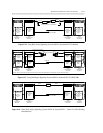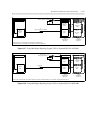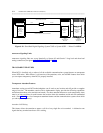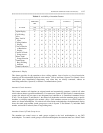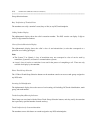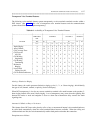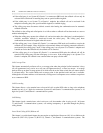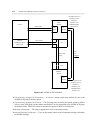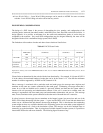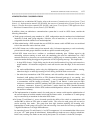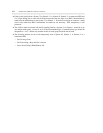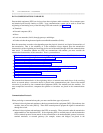DISTRIBUTED COMMUNICATIONS SYSTEM (DCS) 6-19
_ ______________________________________________________________________________________
_ ______________________________________________________________________________________
_ ______________________________________________________________________________________
feature allows the caller to leave a ‘‘call me’’ message for the called party. The switch automatically
creates a message that contains: calling party name and extension number, date, time, and a short
customer-specified message such as ‘‘please call’’.
Switch-based LWC is not transparent from or to DIMENSION PBXs, or when the DIMENSION is an
intermediate switch. LWC cannot be activated toward the DIMENSION PBX from another switch.
Call Transfer/Conference
This feature allows terminal users to create a 3-way conference (add on a third party) or transfer a call to a
terminal at a distant node or to an outgoing trunk facility. On System 85, Generic 2, and DIMENSION, an
analog voice terminal user initiating a conference call cannot add tones or ringing to the conference; the
conference can only be completed when a talking path is established between the conference originator and
the third party.
Note: This feature overcomes disconnections due to attempts to link two outgoing trunks together. With
this feature, one of the outgoing trunks is considered incoming for the duration of the call. The outgoing
trunks do not remain connected, however, if there is no station to maintain disconnect supervision.
Audio Information Exchange (AUDIX) Features Transparency
AUDIX connectivity in a DCS network in which one switch can provide the AUDIX functions for all
switches in the network is provided by System 85 (R2V2-V4), System 75 (R1V3, Issue 1.4), Generic 1,
Generic 2, and DIMENSION PBX FP8 Issue 3L8.
Figure 6-20 shows the configuration for providing AUDIX transparency in a DCS network. It consists of a
single AUDIX machine connected to multiple switches through a host or ‘‘gateway’’ switch. The voice
links to/from AUDIX terminate in an Automatic Call Distribution (ACD) group on the host switch.
Therefore, the host switch is a tandem point for all voice connections between AUDIX and the other
(remote) switches in the DCS network. The voice links between the host and remote switches are
intermachine tie trunks.
Signaling link connectivity between the switches (host and remote) and the AUDIX machine are provided
through logical channels on the physical link from AUDIX to the DCIU or PI on the host switch. These
logical channels are routed from the host switch to each remote switch, thereby establishing a path for each
remote switch to AUDIX.
Transparency of the AUDIX features/functions exists for host switches and remote switches when the
switches are System 85 (R2V2-V4), System 75 (R1V3, Issue 1.4), Generic 1, Generic 2, or DIMENSION
PBX FP8 Issue 3L8. However, there are some enhancements in functionality when the remote switch is a
not a System 85 R2V2 or a DIMENSION. The enhancements are noted in the following list:
• Direct calls to AUDIX through local ACD group — The user on the remote switch may call a local
ACD group (on the remote switch) that is, in turn, forwarded to the AUDIX ACD group on the host
switch. In this case a user who is out of the office does not have to place a long distance call to the host
switch to get messages. The user calls the local switch to get messages.
• Direct calls to AUDIX through host ACD group — The user on the remote switch may directly call the
AUDIX ACD group on the host switch.



